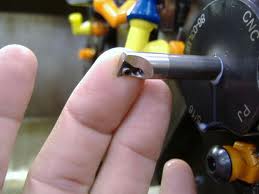When doing any operation on a lathe, all parameters are critical and should not be overlooked. There are industry standards and recommendations for SFM, feedrates, insert geometry, workholding, etc., that should be followed.
A common problem in boring applications is that the boring bar is extended further than recommended, or the diameter to length ratio is exceeded for that particular bar.

Boring Bar Diameter to Length Ratio Recommendations for CNC Machinists
Boring bars are made of different materials, and they all have different diameter to length ratios. Where one boring bar will work, another may not.
In boring applications, the diameter to length ratio is the biggest contributor to vibration
The most common materials for boring bars and their diameter to length ratios are:
Boring Bar Materials Diameter to Length Ratio or D to L Ratio
Steel 4:1 Heavy Metal 4:1 to 6:1 Steel Devibrator 6:1 Tungsten Carbide 6:1 Carbide Devibrator 8:1 Standard Tunable 6:1 to 10:1 Special Carbide Devibrator over 10:1 Special Tunable 10:1 to …
When choosing a boring bar, look at the diameter and length of the hole to be bored. Then choose the proper boring bar based on the diameter to length ratio that will work best for the application.




















